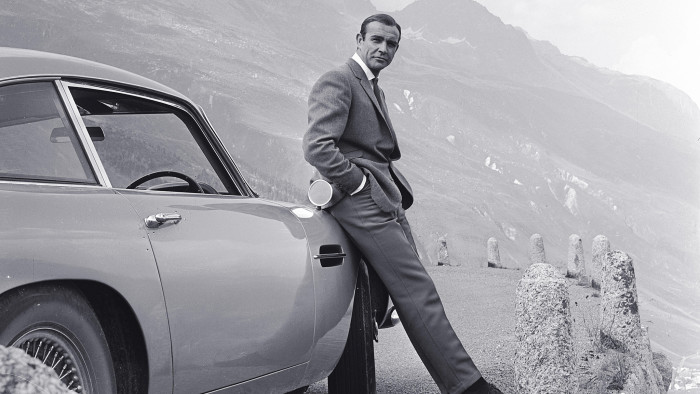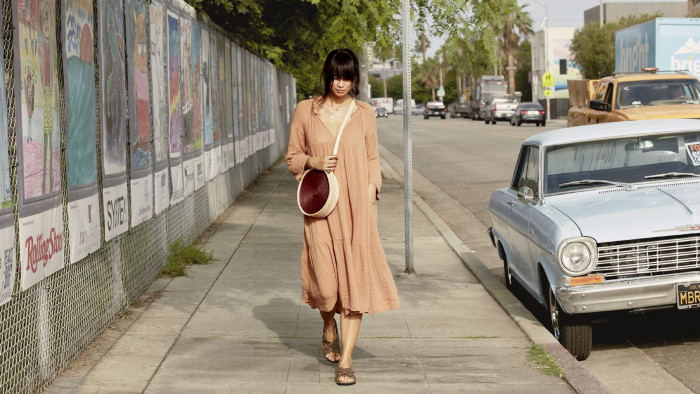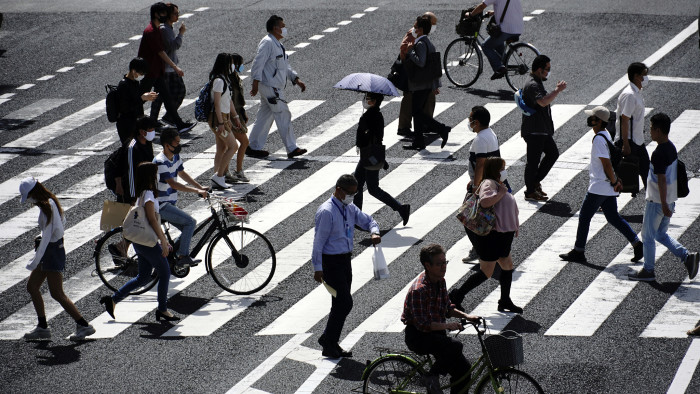We will dress up again


Roula Khalaf, Editor of the FT, selects her favourite stories in this weekly newsletter.
Lockdown may have left you missing your friends. I miss my shoes.
Not my trainers and work boots; I’ve been wearing those every day for three months. Real shoes. Cordovan leather, wing-tipped brogues, weighing a solid pound and a half apiece. Black ankle boots in shiny calf leather.
Weirder still, I miss cleaning my shoes, and the turpentine smell of the polish. I miss my suits. I like to think they miss me, too, as they droop despondently in a closet I don’t visit anymore. Another absent smell: the slightly chemical whiff of pressed shirts back from the cleaner. I miss, God help me, wrestling cufflinks into those shirts in the morning. Most of all, I’m looking forward to putting on a tie again after this miserable pandemic is over.
That puts me in the minority. Certainly my friends (whom I’ll admit to missing a little, too) consider me an oddball. To them, shoe polish and ties and all the rest of the junk I long for is emblematic of a hierarchical, uncomfortable and pretentious form of masculinity that is on its way out.
If this is right, only a crazy man would be looking forward to dressing up and greeting the reopened world, because the good bit of quarantine is that it is casual Friday every day. The last shackles of formality have been thrown off. When we return, the ascendance of informality, sincerity, and choice will be complete. Jeans and spandex all round!
My former colleague Vanessa Friedman, now of the New York Times, has written a rousing polemic arguing that after the pandemic we will indeed get dressed — “Capital D Dressed” — again. This is because, just as in past crises, style will help us define how the crisis has changed us, and how a new world will be made. Clothes “will do what clothes always do, which is symbolise a moment, and give it visual shape”, she writes.
But I note, with some despair, that all of Friedman’s examples, historical and otherwise, are drawn from womenswear. Maybe this was by design; she does not say. But I suspect it was because if she tried to include men in her argument, it would have been in danger of falling down.
Men have steadily backed away from Capital D Dressing over the course of my lifetime, and the trend is set to accelerate in the post-pandemic era. The function of the suit and tie in 2020 is almost purely as a professional uniform: the domain of politicians, lawyers and middle management (upper management are required to drop the tie, to communicate their openness and sincerity).
Who, in America especially, wears a suit for decorative purposes? There is enough demand at the very top of the income scale to keep Kiton’s New York outpost going, selling $10,000 off-the-rack suits to private equity barons. Savile Row trunk shows still cross the Atlantic. But for most men the walls are closing in. There is no Capital D Dressing, with the exception of the odd black-tie event, where men get to pantomime as James Bond.
The new fashion landscape
Parisians taste freedom

Cautious chic prevails as the French capital emerges from lockdown. Leila Abboud observes how the ‘flâneurs’ have altered their dress
New look for local living

Street style is changing under lockdown, with baggy shapes and Birkenstocks replacing tailored outfits. Grace Cook asks if the look is here to stay
Masks and monochrome in Tokyo

Almost everyone on Omotesando is wearing a mask. The fuss in the west about them seems bewildering
Men, to the degree that they choose their clothes carefully, now almost always choose sportswear, a category explicitly designed to telegraph its casualness to the world. It is telling that Richard James, one of the most forward-looking of the Savile Row tailors, has launched an “athleisure” line: T-shirts, hoodies and so on. Expect others to follow.
Why is the arc of history bending, inexorably, towards tracksuit bottoms? I’m not sure. The standard answer, that we prioritise comfort now, is hopelessly circular. We are at ease when we are dressed correctly. Suits are comfortable — they are designed to be.
The other argument — that the world has become less hierarchical, so our clothes no longer need to signal our status — is juvenile. The way we signal status may change. Our obsession with it does not.
In any case, I’m trying to keep my hopes up. Capital D Dressing for men, generations on the wane, might make a comeback in the post-pandemic world. Perhaps when we return to the office in a still-uncertain world, we will realise that a job is a privilege, something to be lived up to and dressed up for. And when our social lives are back to normal, men might recognise again the power and pleasure of looking good. What man, after all, really looks their best in tracksuit bottoms?
The chances of a reversal are admittedly slim. But whatever the new world looks like, I will greet it with polished shoes.
Email Robert at robert.armstrong@ft.com
Follow @financialtimesfashion on Instagram to find out about our latest stories first. Listen to our podcast, Culture Call, where FT editors and special guests discuss life and art in the time of coronavirus. Subscribe on Apple, Spotify, or wherever you listen.
Letter in response to this article:
Laundered shirts, remember them? / From Paul Ridgway Ketton, Rutland, UK
Comments